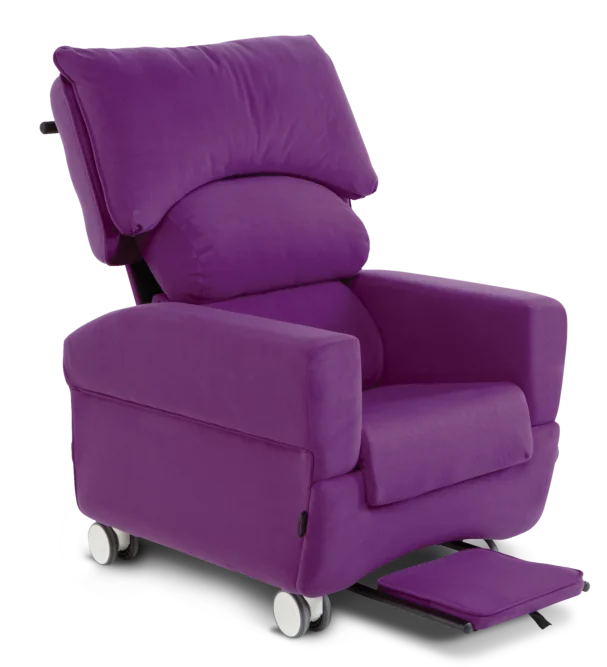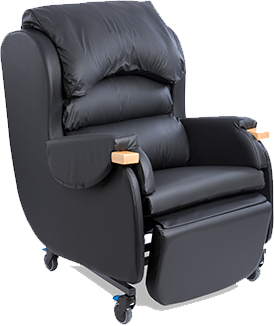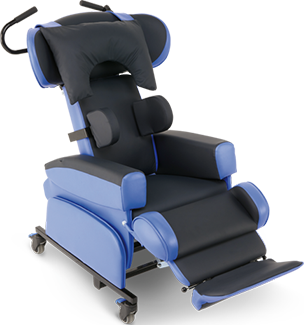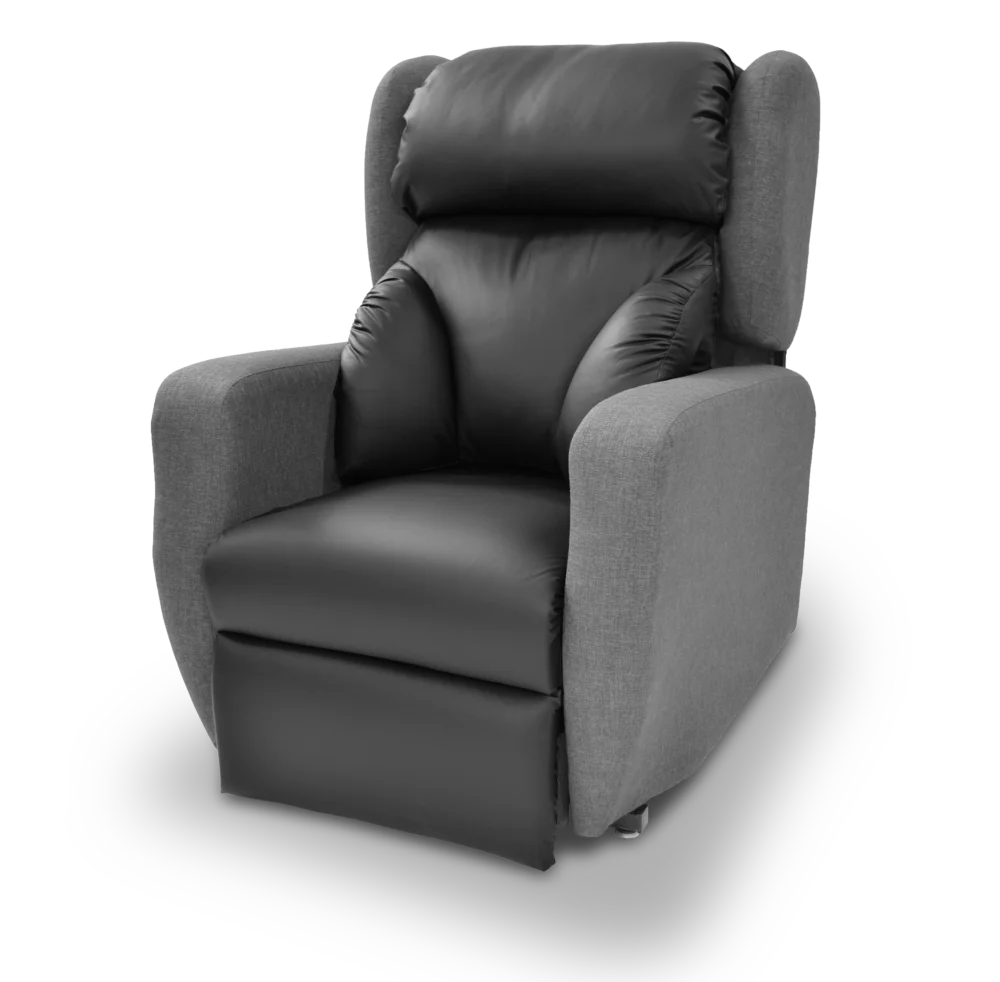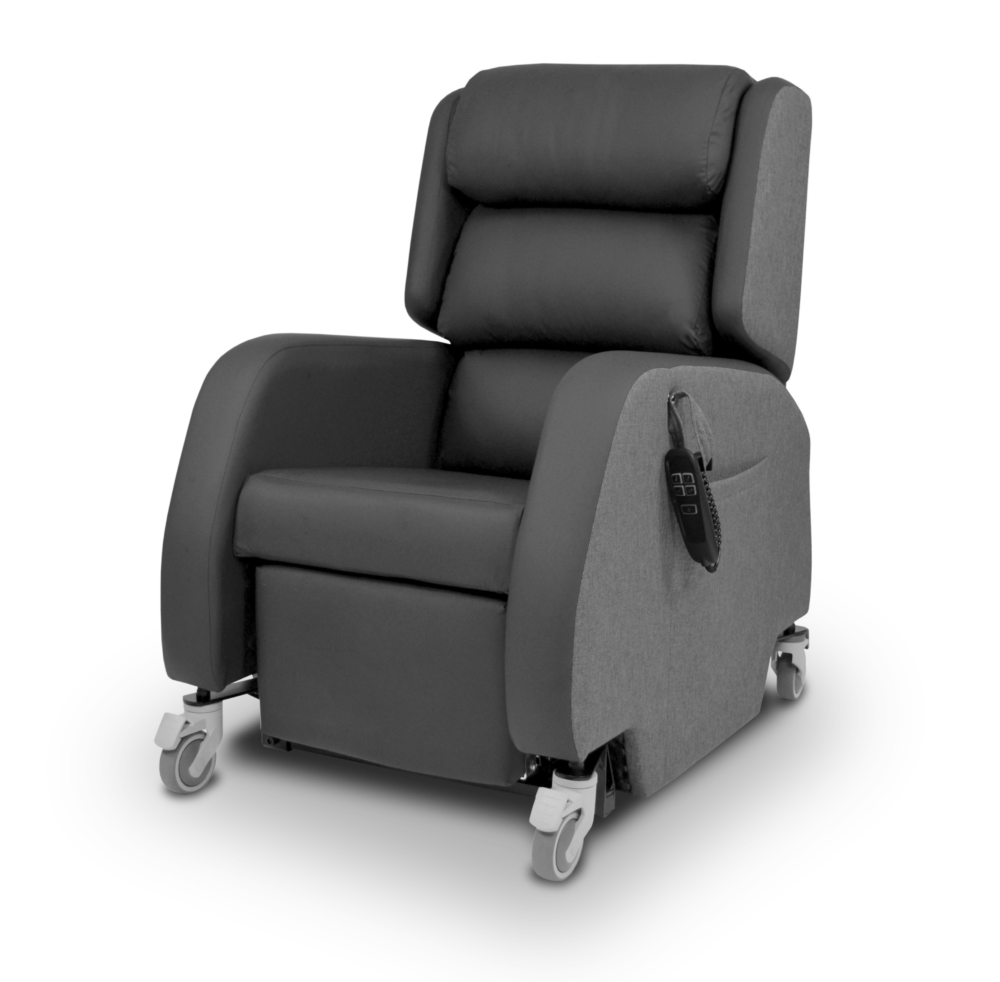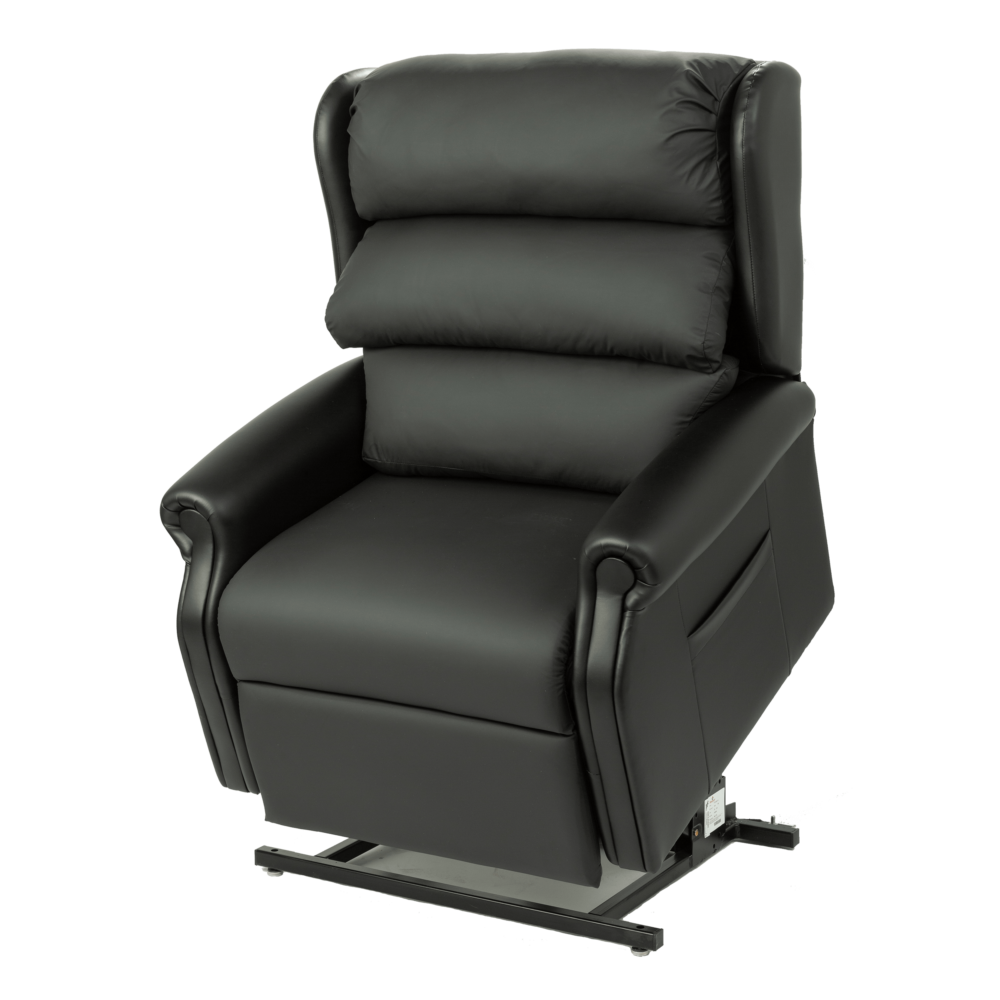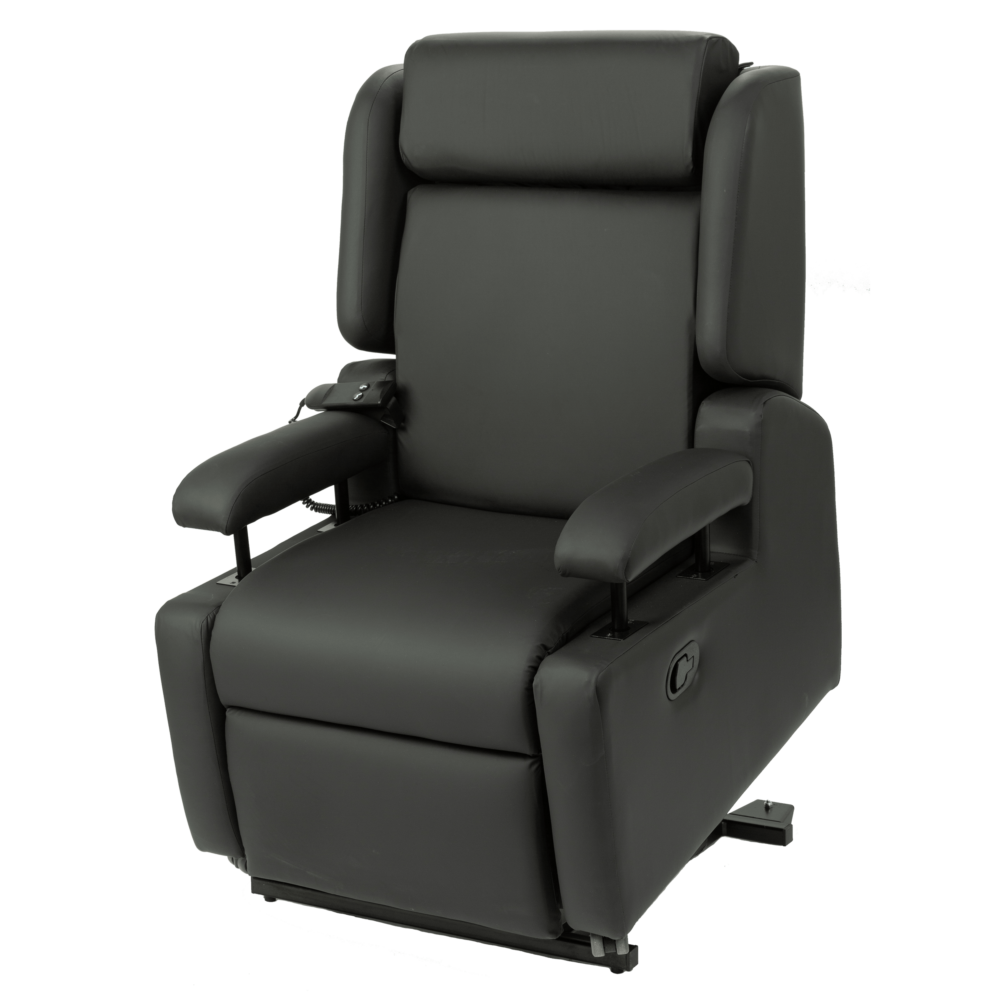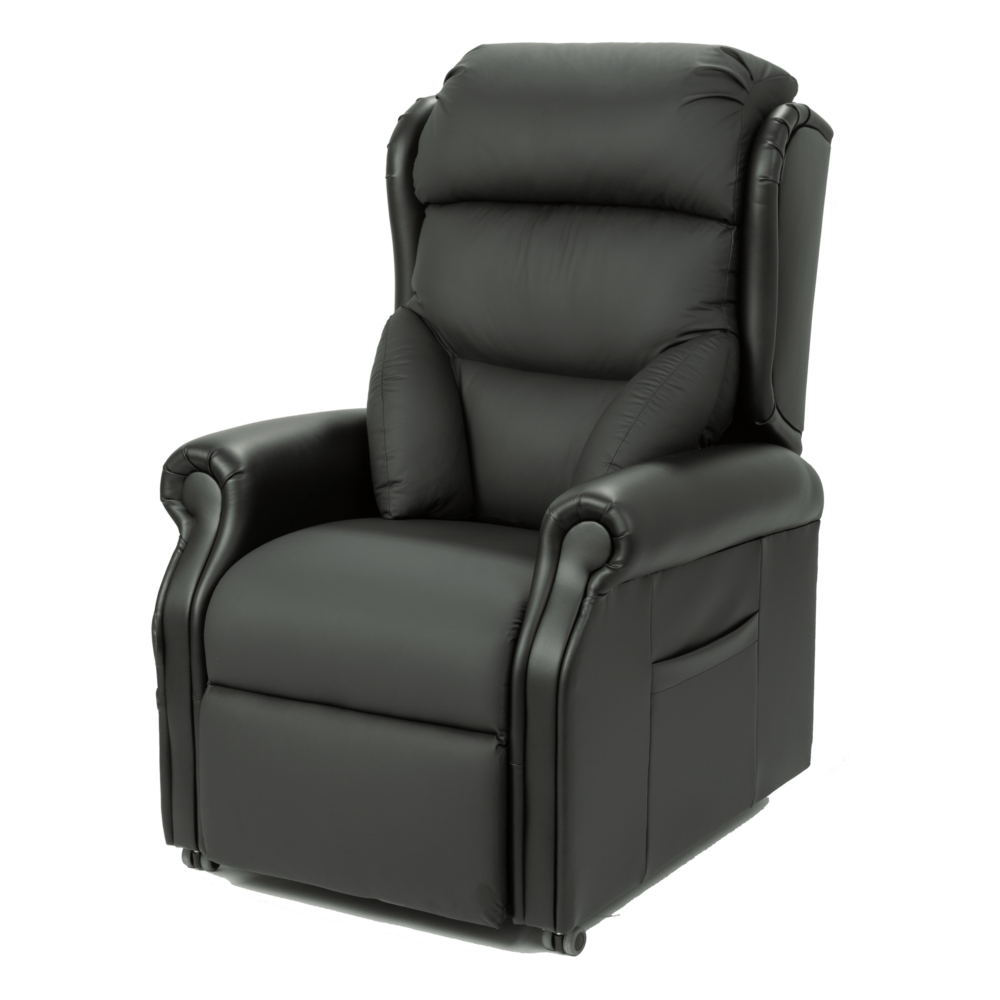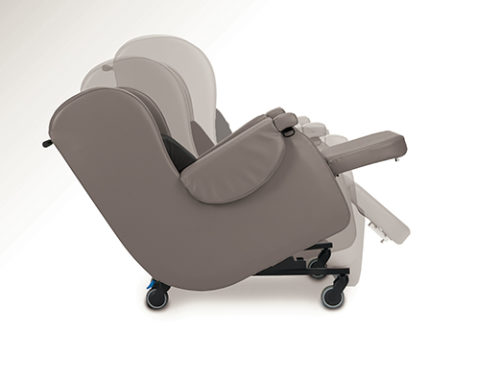A Specialist Seating Q&A Series Part 3 – Conditions 1/3
1.Why is specialist seating important in stroke recovery?
Prolonged and/or destructive sitting postures as a result of a stroke can cause tension on the body and increase the risk of significant pain; therefore, ensuring comfort through specialist seating can ultimately improve a person’s quality of life. Fatigue can often be experienced following a stroke and can affect all aspects of an individual’s life. It can significantly restrict their ability to engage in daily living, as well as having a negative impact psychologically and socially1. The appropriate use of specialist seating can encourage energy conservation, making it easier for individuals to live a meaningful life. Specialist seating can also promote postural stability, which is key for encouraging normal movement and independence during rehabilitation.
Another major goal in postural care is to promote good health and enhance autonomic nervous system function2. The inability to sit upright may result in decline in overall health, primarily reflecting altered physiological function3. Specialist seating can provide the necessary postural support to achieve an upright sitting posture.
We also cannot underestimate the importance of promoting psychological and cognitive factors in an individual’s recovery following stroke. A stable posture can encourage participation in social activities at home or work, and as part of the community. An upright sitting position can also offer a better line of vision for interaction and provide an increased ability to achieve cognitive tasks4.
Finally, specialist seating offers a much-needed opportunity to sit out, and its chair functions can also offer a regular change of position to encourage blood flow and redistribute pressure. Specialist seating systems aim to reduce the risk of pressure injuries by distributing the user’s body weight evenly throughout the chair over the maximum surface area.
2.What is the best chair for stroke rehabilitation?
Specialist seating systems can offer a range of seating solutions for an individual recovering from stroke throughout their rehabilitation:
- A choice of back and head supports can encourage trunk alignment for optimum physiological function and a midline head position for interaction and engagement.
- A waterfall back can help manage muscle weakness and poor sitting balance.
- A contoured back and the option to add laterals can accommodate more complex postures, such as paralysis and a fixed scoliosis.
- Adjustable seat dimensions can improve pelvic positioning to manage a posterior pelvic tilt whilst promoting pelvic stability.
- Tilt-in-space, if safe and appropriate, can further promote pelvic stability without affecting the hip and knee angles.
- Tilt-in-space can also be utilised to achieve pressure redistribution and energy conservation by allowing periods of rest.
- WaterCell Technology®is at the heart of CareFlex specialist seating; it provides a reliable and dynamic pressure relieving solution for individuals at risk of pressure injury.
- AutoTilt actuation can enhance the standard pressure management functions by automatically moving the user through small degrees of tilt at short intervals to regularly redistribute pressure.
- Back angle recline may be indicated, only when safe and appropriate, to accommodate reduced range of movements at the hips.
- A negative angle leg rest can also accommodate reduced range of movement at the knees due to hypertonicity and contractures.
- A channelled leg rest can provide comfortable lower limb positioning whilst maintaining alignment and stability, and an angle adjustable footplate can further promote postural security.
- A flip-up or stowable footplate can help the ambulant user achieve a good foot placement to enable safe transfers, or facilitate the safe use of hoisting equipment; we must consider the individual’s mode of transferring to encourage mobility and independence.
The CareFlex HydroTilt could be a great solution for individuals who present with moderate postural needs, or the HydroFlex if they present with more complex needs. If something more bespoke is identified at assessment, the tailored seating solutions service can enable the provision of a unique seating system.
3.How does Huntington’s Disease challenge seating posture?
Huntington’s disease is a rare neurodegenerative disorder of the central nervous system that stops parts of the brain working properly5. Huntington’s disease is an inherited condition; both men and women can develop the disease. It is caused by a faulty gene that results in parts of the brain becoming gradually damaged over time, and can affect an individual’s movement, cognitive function and behaviour6.
Huntington’s disease can challenge seated posture as a result of:
- Chorea (involuntary movements) that impair postural control and pelvic stability.
- Pelvic instability resulting in a posterior pelvic tilt and/or rotation and an excessive thoracic kyphosis.
- The resulting reduced sitting ability that can increase the risk of sliding down the chair.
- Dystonia (uncontrollable muscle spasms) that can cause pain and affect range of movement.
- Fatigue, which significantly impacts on function and independence.
- Repetitive and energetic choreic movements resulting in weight loss.
- Individuals adopting more massed flexion posturing in the later stages of the disease.
4.What is the best chair for Huntington’s Disease?
For individuals living with Huntington’s disease leading a largely sedentary lifestyle, specialist seating that promotes comfort and stability, and maintains seatability, is essential:
- A chair measured for the user with correct seat dimensions is vital for pelvic stability and postural control, subsequently encouraging normal movement/managing abnormal movements.
- A ramped or angled base, graduated at the back, will position the pelvis lower than the knees to promote safety and security for the individual by reducing the risk of sliding out of the chair.
- Where necessary, and following a risk assessment, a pelvic belt or groin harness can further encourage pelvic stability; least restrictive positioning methods should be trialled first.
- Postural support at all body segments can encourage them to work together efficiently.
- Trunk and head support is imperative for functional ability, including safe eating and drinking to reduce the risk of aspiration or choking.
- Tilt-in-space, if appropriate, can help individuals to manage available energy levels and promote rest by reducing the effects of gravity for a period of time; they can then conserve energy to direct it into activities of daily living important to them.
- Tilt-in-space can also support pelvic stability, postural control and pressure redistribution without compromising the hip angles when tilted slightly posteriorly.
- Pressure care is a crucial consideration as bony prominences from weight loss become at risk from striking the chair during choreic movements. There are also skin integrity risks from prolonged sitting, unequal weight distribution and shearing forces from sliding forward.
Choosing the right chair can provide individuals with a place of safety and security, whilst reducing the risk of secondary complications. CareFlex’s HydroTilt can offer individuals with Huntington’s disease essential postural management and pressure care whilst promoting comfort and relaxation:
- Available in mini, small, medium and large size, and also modular in design, ensures that it can be easily tailored to the individual.
- Adjustability throughout the chair will enable the appropriate chair dimensions to be achieved, promoting pelvic stability and postural control.
- The robust frame is designed to withstand involuntary movements and unstable sitting transfers.
- Padded elements, including the armrest and footplate, throughout the chair can also protect the user from injury during these uncontrolled choreic movements.
- A contoured back can promote trunk alignment, or a waterfall back can manage an increased thoracic kyphosis; a tray can also be added for anterior upper limb support.
- A negative angle leg rest can facilitate standing transfers, and accommodate tight hamstrings muscles and knee contractures.
- WaterCell Technology® provides a reliable and dynamic pressure redistributing solution; it enables the user to achieve a stable and functional posture without compromising on pressure management and comfort.
5.Can specialist seating help an individual with Motor Neurone Disease (MND)?
MND describes a group of diseases that affect the nerves (motor neurones) in the brain and spinal cord responsible for voluntary movement and muscle control. With MND, messages from these nerves gradually stop reaching the muscles, leading them to weaken and waste7 (atrophy). It is a rapidly progressive, invariably fatal, neurological disease that can significantly shorten life expectancy, but some people live with it for many years. There is no known cure but there are interventions, such as therapies, equipment and medications, that can reduce the impact the disease has on daily life8 and ultimately achieve the best possible quality of life for individuals.
MND affects everyone differently. It causes a range of different symptoms that can appear in a different order and can progress at varying speeds for each individual:
- Pain
- Fatigue
- Weakness
- Reduced postural stability
- Abnormal muscle tone
- Posterior pelvic tilt
- Increased thoracic kyphosis
- Limited head and neck control
- Shoulder subluxation
- Contractures and deformities
- Increased risk of pressure injuries
- Increased risk of falls
Specialist seating can help individuals achieve the best possible quality of life by offering a solution for improved comfort, pressure care and physiological function, and maximised health and independence. Maintaining good posture and positioning can help to promote wellbeing whilst protecting the body system and reducing the risk of secondary complications9.
CareFlex specialist seating prioritises comfort for individuals without compromising on appropriate postural management:
- A range of seat cushions and back supports can encourage postural control and trunk alignment, critical to optimum physiological function.
- Contoured cushions can help stabilise the pelvis to manage abnormal muscle tone and improve functional movement.
- Tilt-in-space, if safe and appropriate, can recruit gravity to further promote pelvic stability and energy conservation.
- A waterfall back can accommodate a kyphotic posture by removing some wadding from the thoracic section.
- WaterCell Technology can provide a reliable and dynamic pressure redistributing solution to reduce the risk of pressure injuries.
- Channelled leg rests can support the lower limbs in midline; elevating the leg rest, if critical angles allow, can also allow for movement through joint range.
- An angle adjustable footplate can fully support the feet and accommodate foot drop.
- Flip-up or stow-away footplates can improve foot positioning for safe transfers and mobility.
- Padded armrests can support any shoulder problems.
- Head and neck support options can encourage interaction and engagement, help manage saliva, and promote safe eating and drinking.
- A supported upright seated posture can also aid airway clearance techniques.
As MND progresses and an individual’s presentation becomes more complex, the CareFlex tailored seating solutions service can develop bespoke chair adaptations to address any postural deformities and contractures.
A COMPREHENSIVE SEATING ASSESSMENT IS CRITICAL TO ANY APPROPRIATE SEATING PRESCRIPTION. AN EFFECTIVE CARE PLAN WILL CONSIDER THE INDIVIDUAL’S DAILY LIFE THROUGHOUT THE FULL 24-HOURS HOLISTICALLY. PLEASE DO NOT HESITATE TO GET IN TOUCH WITH US TO DISCUSS ANY QUERIES OR TO BOOK A FREE ASSESSMENT.
References:
- Stroke Association (2021) Stroke Awareness MonthAvailable from: https://www.stroke.org.uk/fundraising/stroke-awareness-month
- Jones M, Gray S (2005) Assistive technology: positioning and mobilityIn SK Effgen (Ed) Meeting the Physical Therapy Needs of Children Philadelphia: FA
- Healy A, Ramsey C, Sexsmith E (1997) Postural support systems: their fabrication and functional use Developmental Medicine and Children Neurology 39:706-710
- Pountney TE, Mulcahy CM, Clarke SM, Green EM (2000) The Chailey Approach to Postural Management Birmingham: Active Design
- NHS Choices (2018) Huntington’s diseaseAvailable from: uk/conditions/huntingtons-disease/
- Huntington’s Disease Association (2018) Symptoms of Huntington’s diseaseAvailable from: org.uk/huntingtons-disease/what-is-huntingtons-disease/symptoms-of-huntingtons-disease
- Motor Neurone Disease Association (2017) What is MND?Available from: mndassociation.org/about-mnd/where-do-i-start/what-is-mnd/
- NHS Choices (2018) Motor neurone diseaseAvailable from: nhs.uk/conditions/motor-neurone-disease/
- O’Callaghan G, Murray D, Vance R (2014) Guidelines for the Physiotherapy Management of Motor Neurone Disease (MND) Available from: https://imnda.ie/guide-to-imnda-services/guidelines-physiotherapy-management-mnd/

